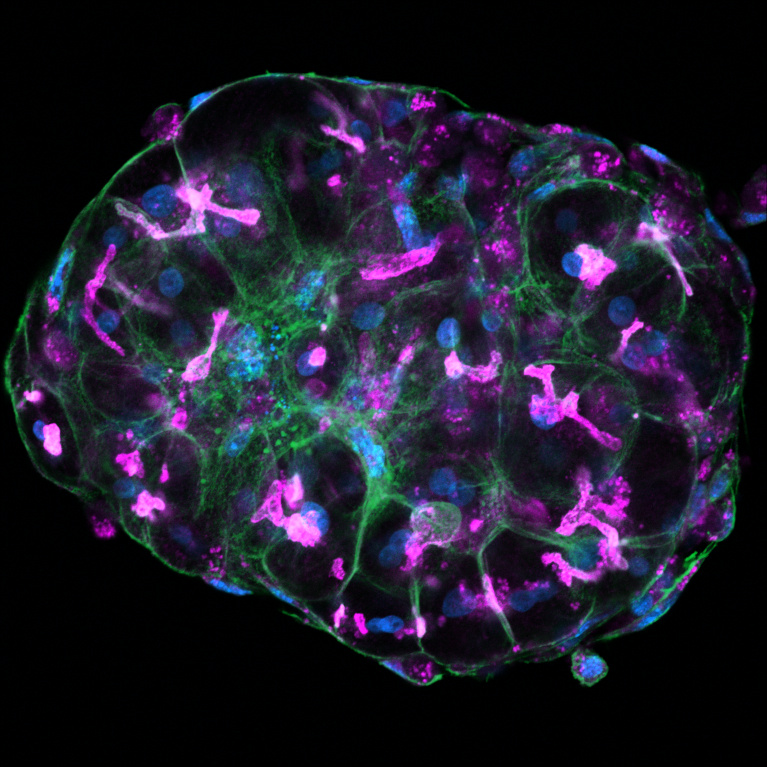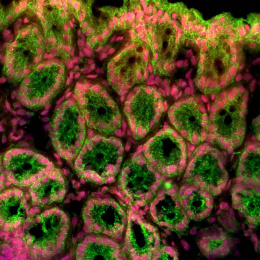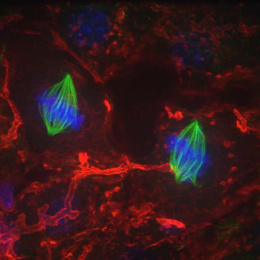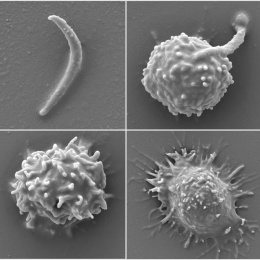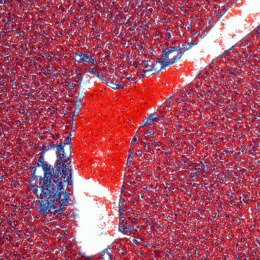On the Road Again 2
On the Road Again 2
Ashley Westerfield, Jesse Kirkpatrick, Kasia Grzelak, Vardhman Kumar, Katie Katsuyama, Heather Fleming, Sangeeta Bhatia
Koch Institute at MIT
A spheroid is a cluster of cells that form a mini-tissue that can be studied in a lab. Because these cell clusters retain many characteristics of their tissue of origin, spheroids are often used as models for both healthy and diseased tissue states, including many different types of cancers. Pictured is a spheroid comprised of hepatocytes, the main cell type of the liver, and supporting cells called fibroblasts. In the Bhatia lab, we generate these spheroids to study the liver and use them as building blocks for our lab’s engineered liver tissue, which can perform liver functions – both in a culture dish and in a mouse model. One of the most important functions of the liver is the transport of bile, a fluid which aids with digestion and facilitates excretion of foreign substances (such as drugs) from the body.
Currently, the Bhatia lab is characterizing this function in our liver spheroids, by looking at the presence of transporter proteins that pump bile components out of hepatocytes and toward the bile ducts. Our liver spheroids produce these transporters within channels that form between individual hepatocytes, which act like roads along which bile components travel. These “roads,” or bile canaliculi, are shown in red or purple in this image, and the hepatocytes that make up the spheroid are shown in green.
Our engineered human liver spheroids create “roads” that transport bile components between cells, which enables us to use these spheroids as a tool to study how both healthy and cancer cells excrete toxins and drug metabolites to promote their survival.
